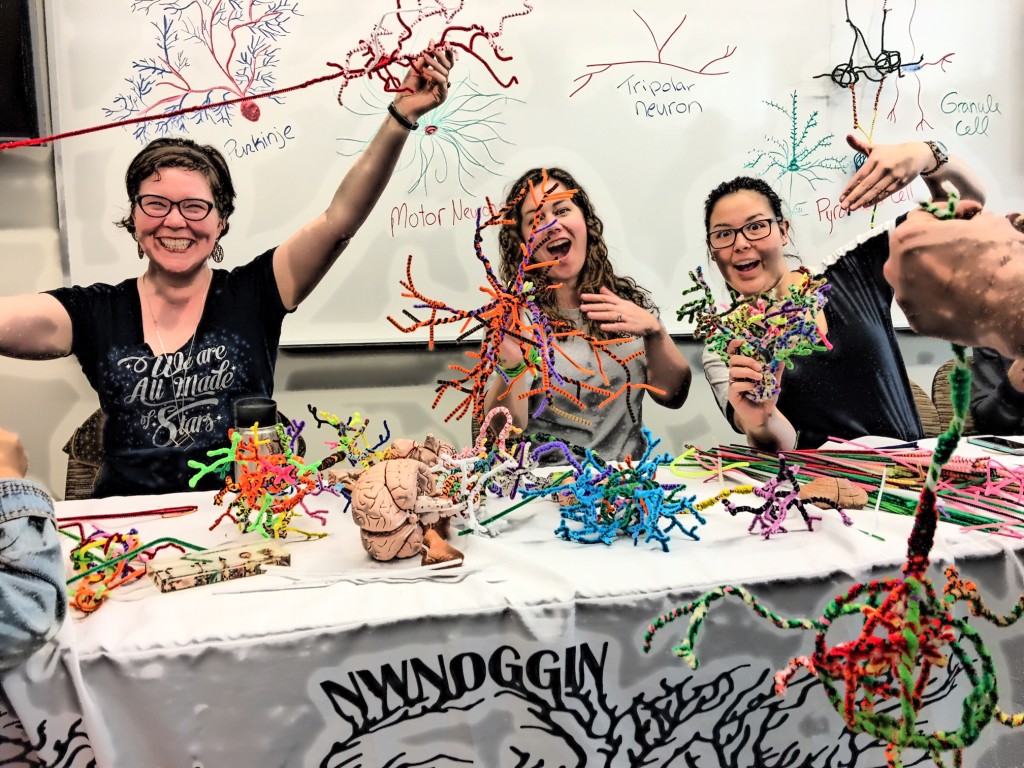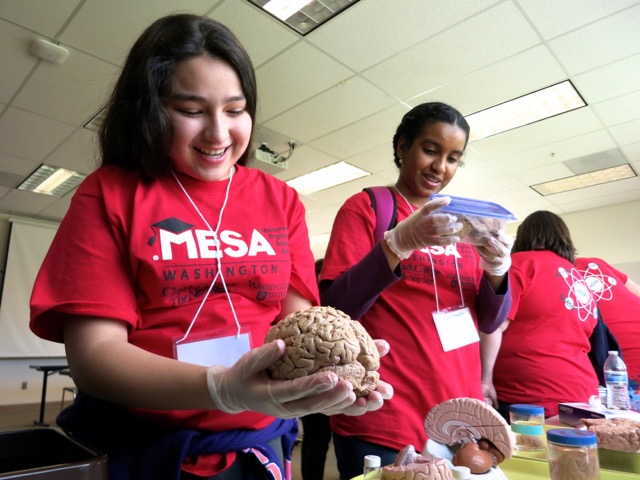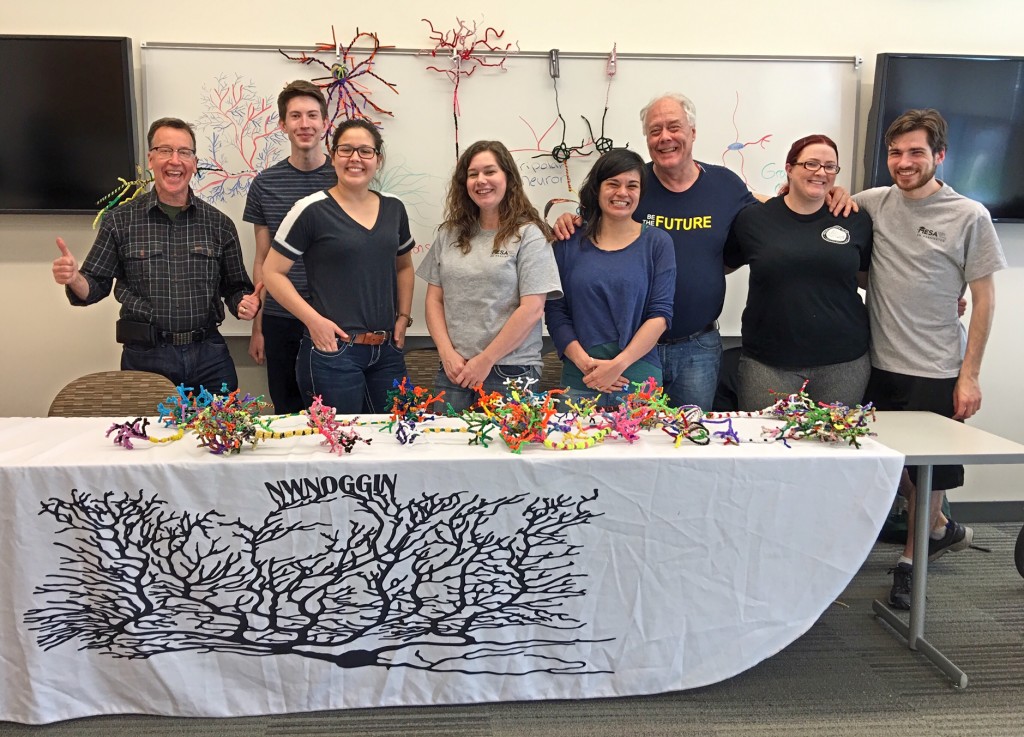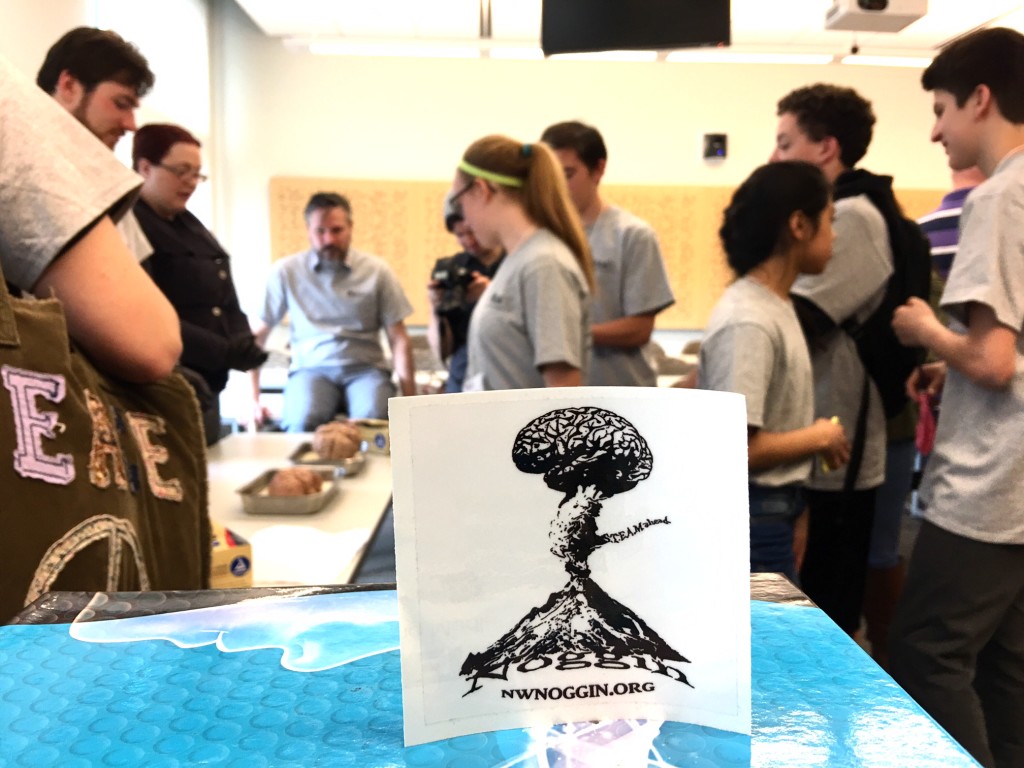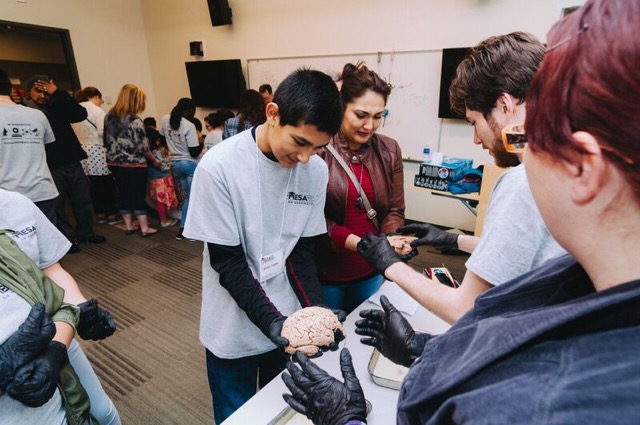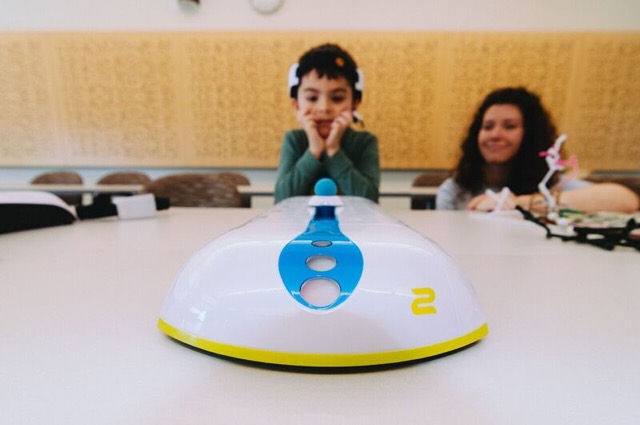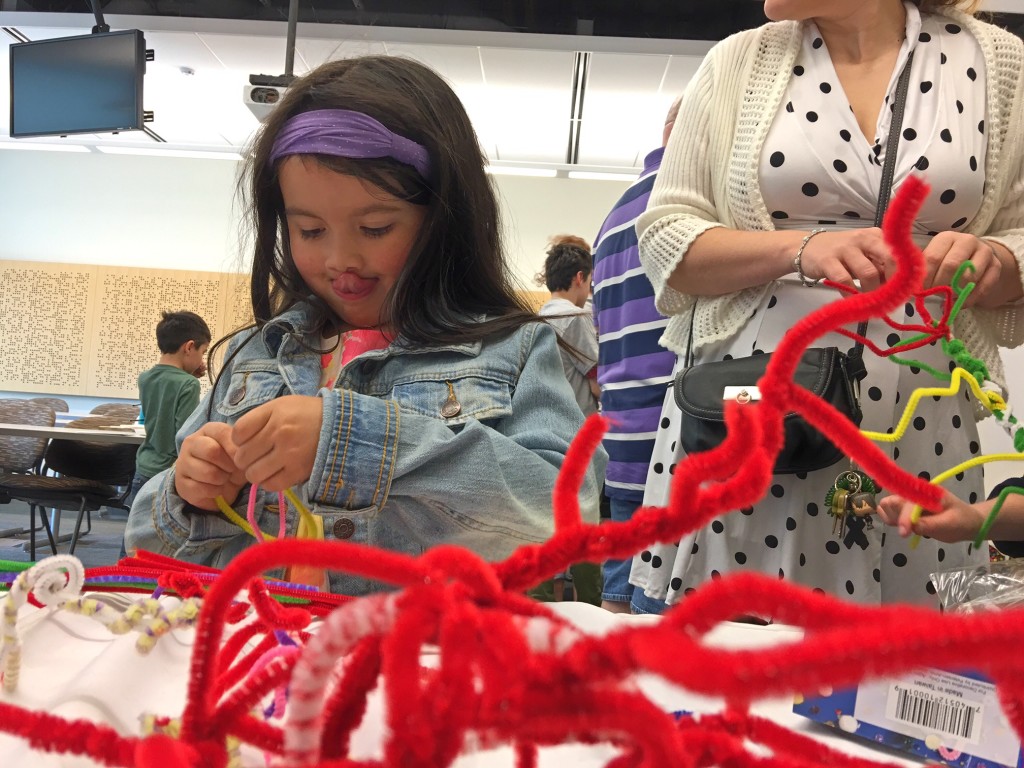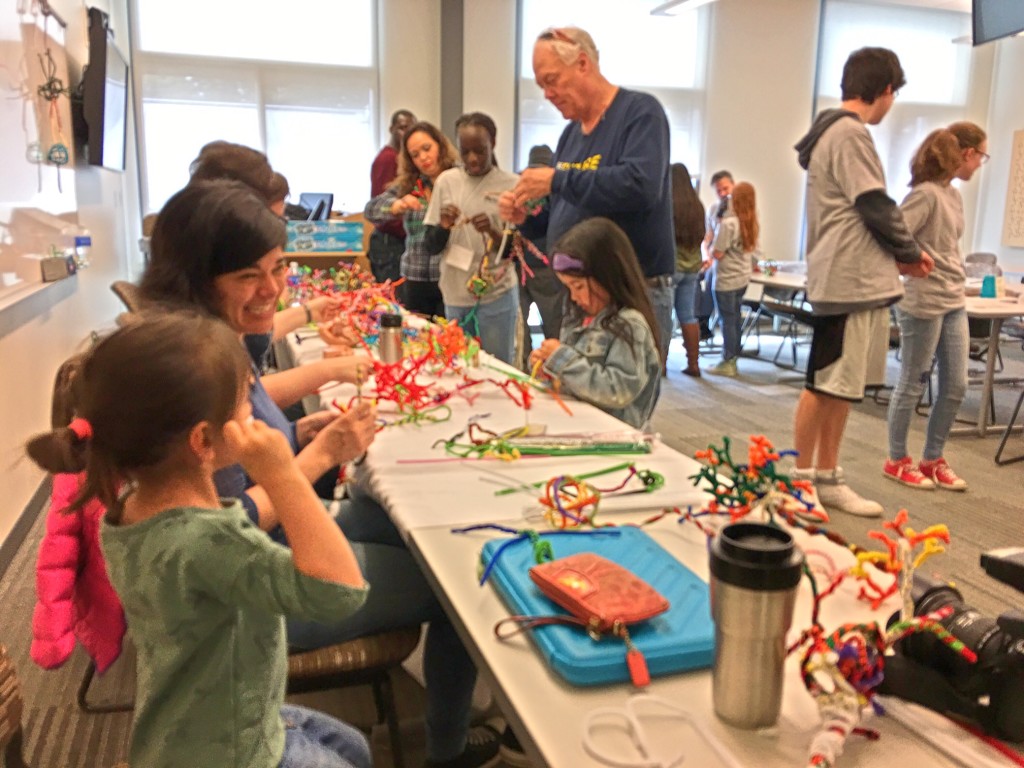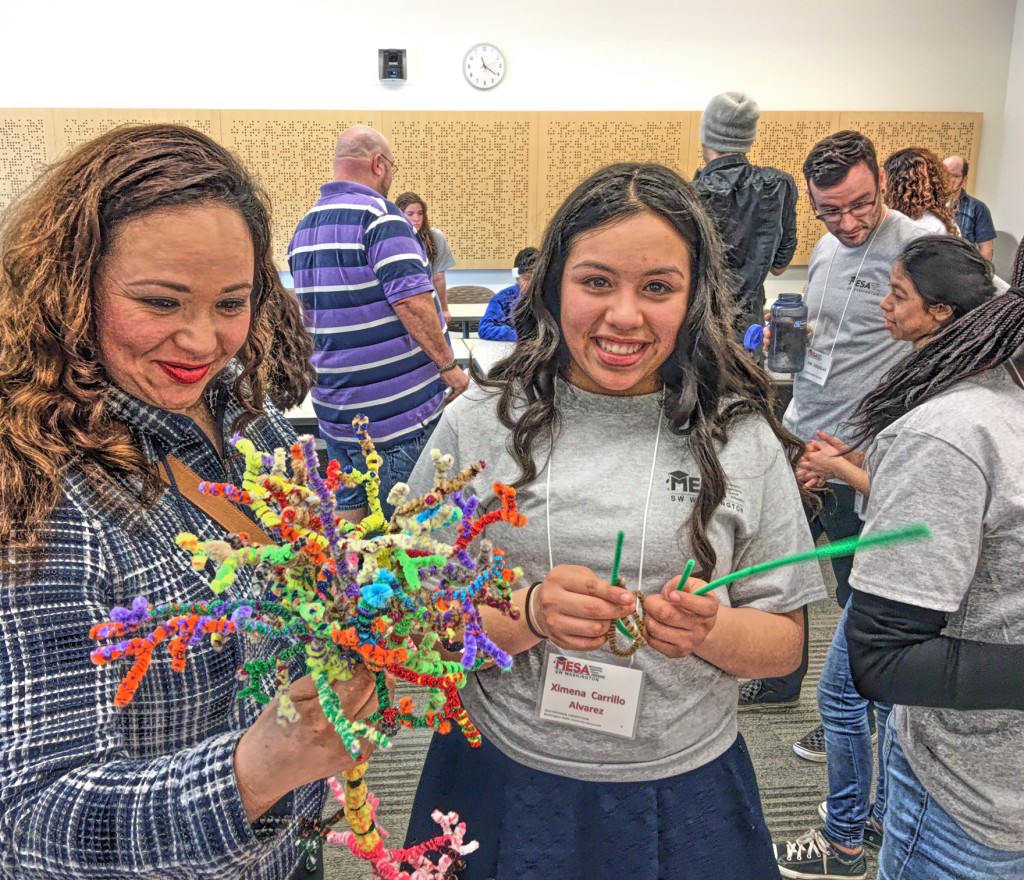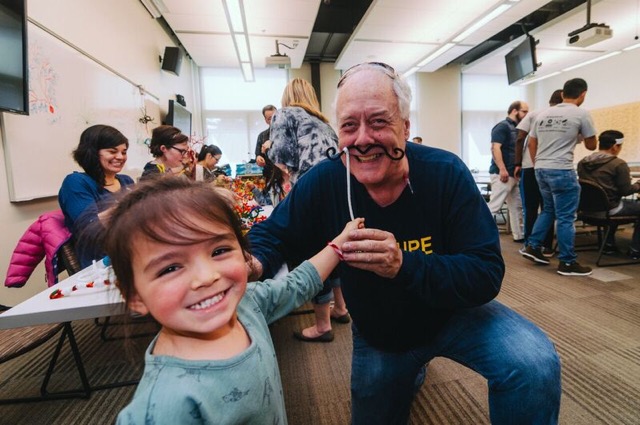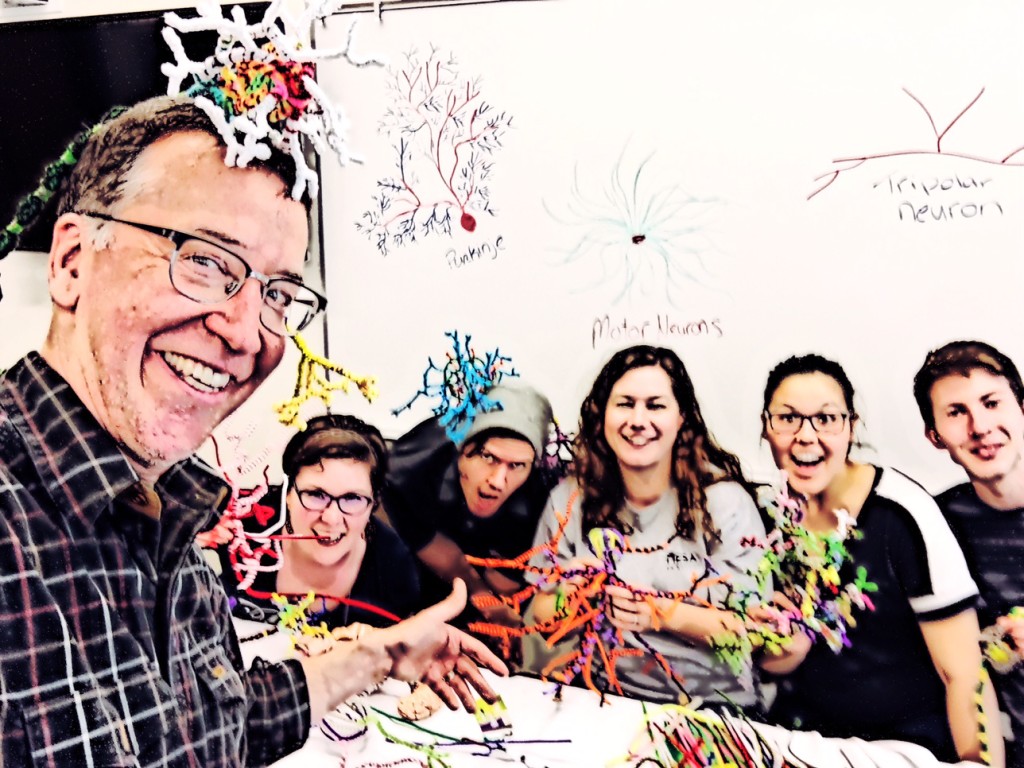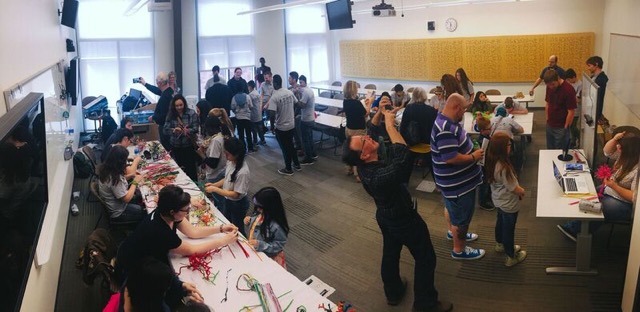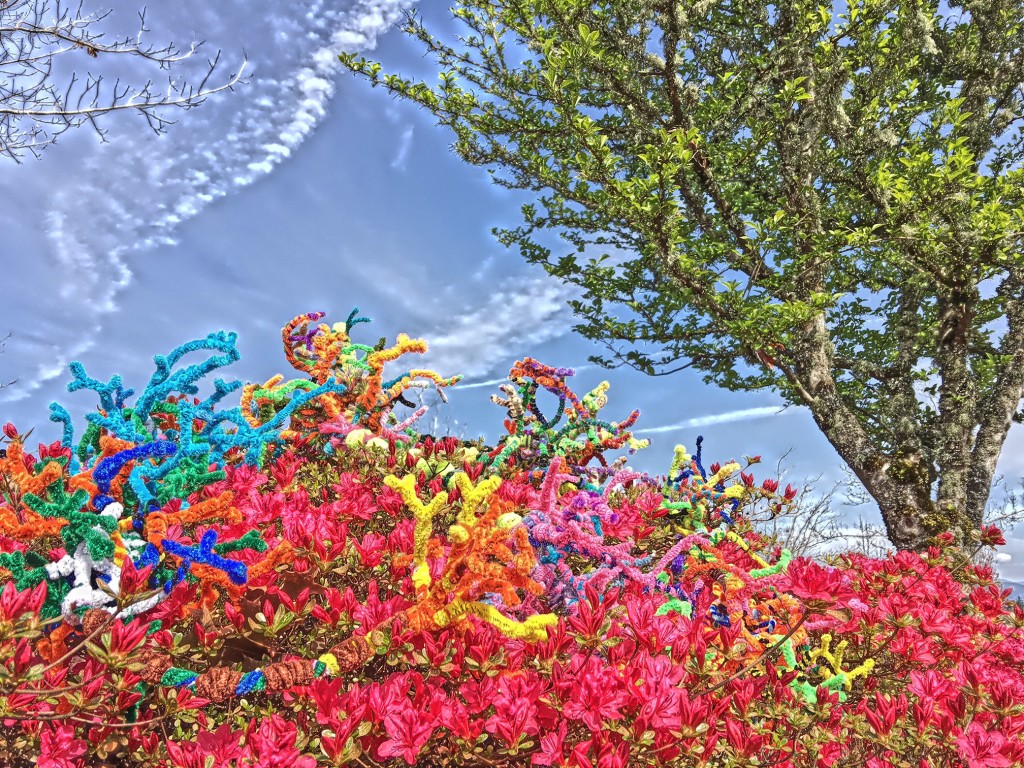NW Noggin volunteers headed to the green, mountain-ringed campus of WSU Vancouver on Saturday, to meet middle and high school students participating in MESA Day 2016…
SW Washington MESA (Mathematics, Engineering, Science Achievement*) aims to offer pathways to college for traditionally underrepresented students, including African Americans, Native Americans, Hispanic/Latinos, Pacific Islanders and women…
* We just wish they would change “Achievement” to “Arts…”
Our undergraduates and graduates joined MESA last year (A MESA Mindflex at WSU) to talk about neuroscience, introduce real brains, and enjoy neuro-themed games and art activities…
This year we had another nice crowd of multi-institutional volunteers, including Jacob Pennington, Caitlin Calsbeek, Ben Yefimov, Angela Gonzalez, Tami Tomtan, and Michael White from WSU Vancouver, and Gaile Parker, Austin Howard, Alex Voigt and Katherine Hill from Psychology at PSU…
Artist Kindra Crick joined us, too, and web designer and animator Brittany Wouden, along with Andrew Gilbert, brought their popular myBrain! app that lets people see their own heads move – with a brain! Both Kindra and Brittany will join our upcoming outreach efforts in Washington, DC…
On MESA Day 2016 there were brains…
Pic above by Alex Voigt
Pic above by Alex Voigt
Pic above by Alex Voigt
And art! Our pipe cleaner neurons are always popular, and like real neurons, they tend to develop multiple processes (including dendrites, dendritic spines, and axon collaterals) and reach out towards others to form synaptic connections…
And they are terrifically useful when illustrating the enormous structural (and thus functional) diversity of the 100 billion or so cells that make up our nervous systems!
For example, students created Purkinje cells from the cerebellar cortex, with so many dendrites, and dendritic spines, that they can each receive up to 200,000 synaptic inputs! These neurons are critical for integrating vestibular information about balance with output to muscles…
Pic above by Alex Voigt
We also created pseudo-unipolar neurons, which carry sensory information from our limbs and torso to our central nervous system. They are sometimes considered “bipolar” cells, because two processes split off a single stalk projecting from their cell body. Individual pseudo-unipolar neurons can be exceedingly long, with some extending their wire-line processes from your toes all the way up to the base of your brainstem! And these same cells are found in giraffes!
Sometimes these long processes are myelinated, or insulated with the fatty membranous sheathing of neural support cells called glia. Myelin increases the speed of current flow in pseudo-unipolar cells, so some types of sensory information travel more quickly. Messages about injury, for example, flow along myelinated A-delta fibers, which contribute to your perceptual experience of short, sharp pain, while throbbing, persistent aspects of tissue damage are transmitted by unmyelinated C-fibers…
Noggin volunteer Ben Yefimov even modeled the neural architecture of the retina, with rod and cone photoreceptors, actual (non-pseudo!) bipolar cells, and the ganglion cells that give rise to our optic nerves! A great example of visualizing neurons – this time those responsible for detecting and initially processing visible light…
Many thanks to Debbie Blas and Dora Hernandez of SW Washington MESA for welcoming us back to play, educate and learn..!
Pic above by Alex Voigt







